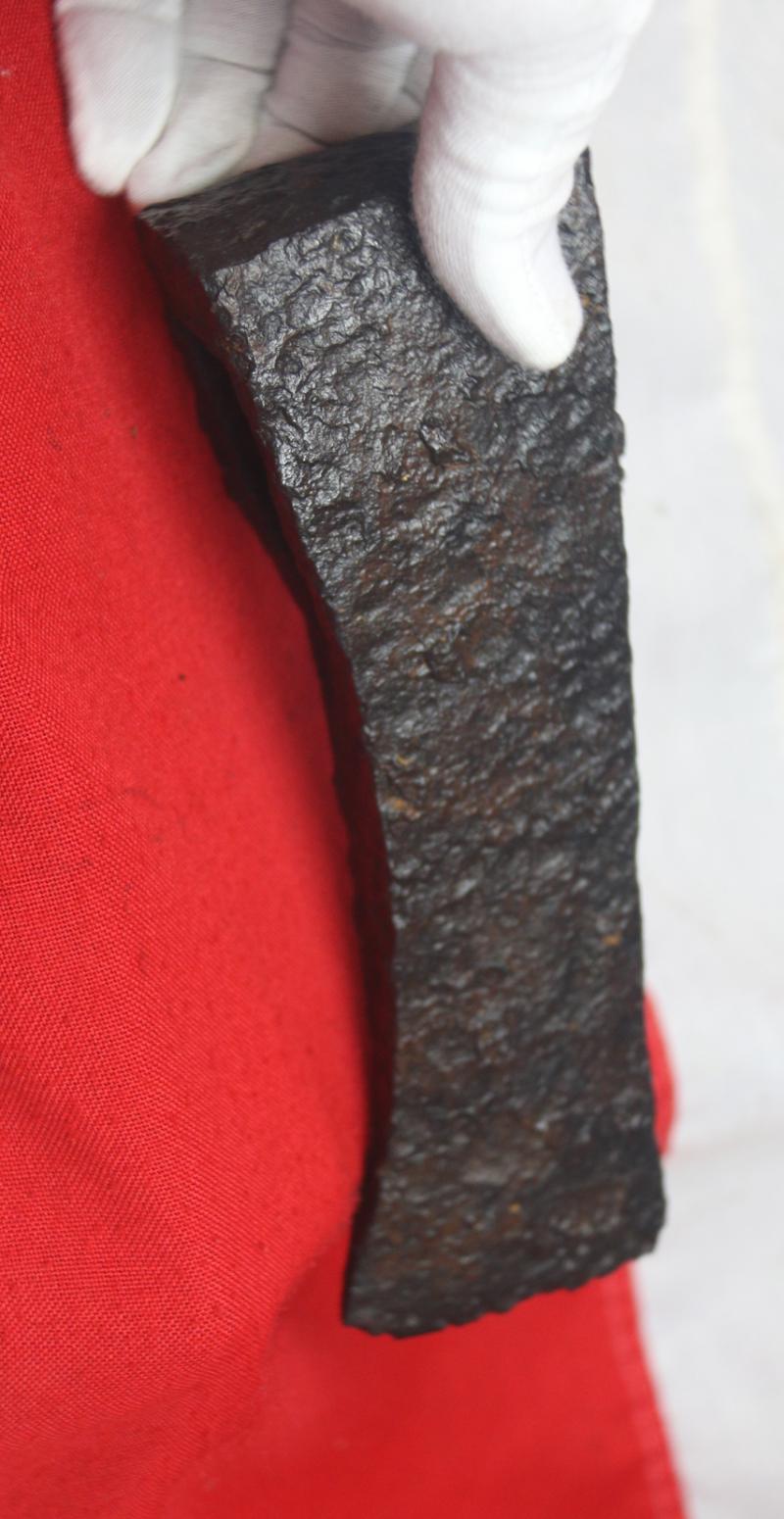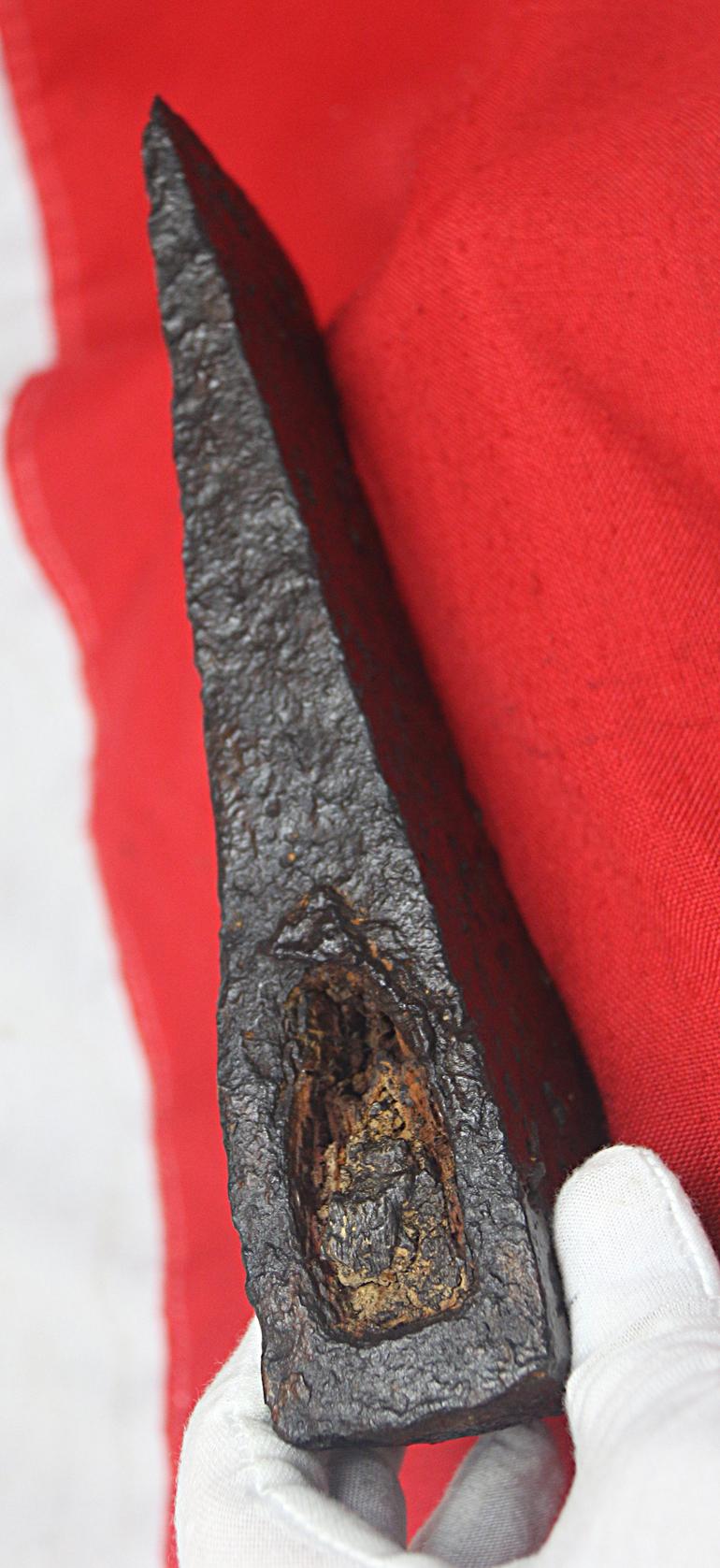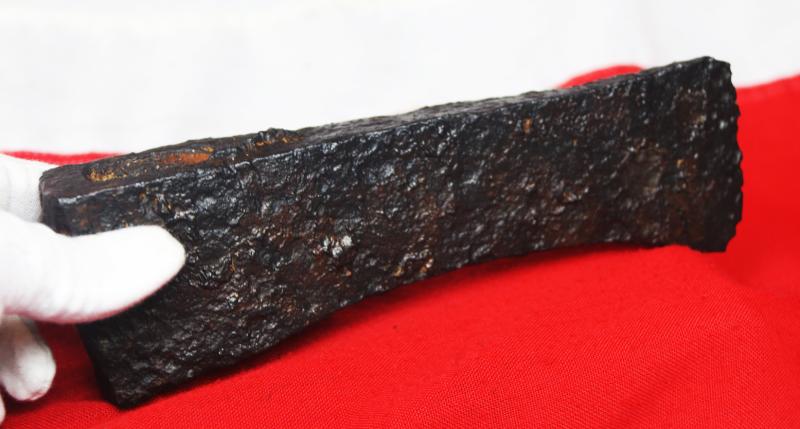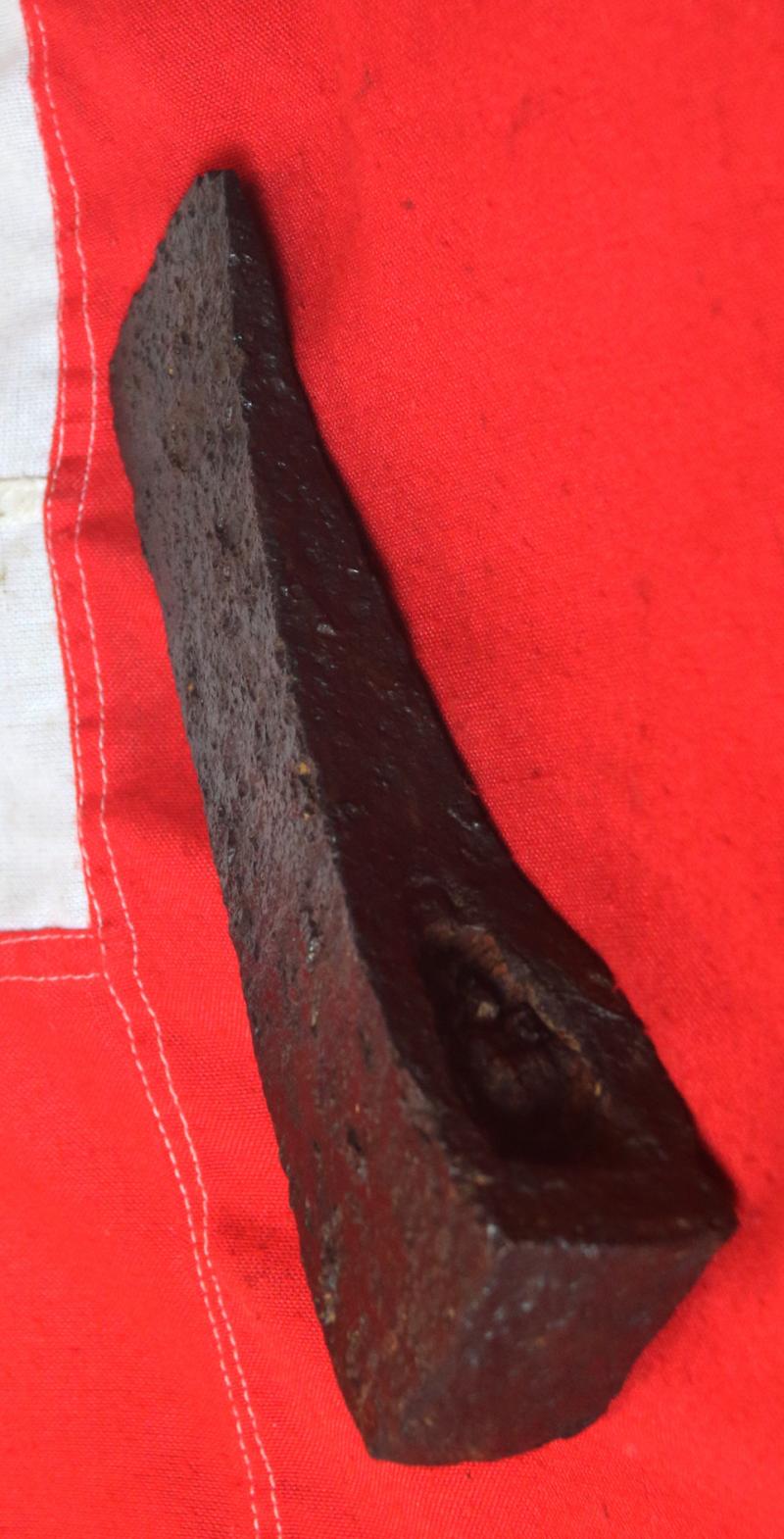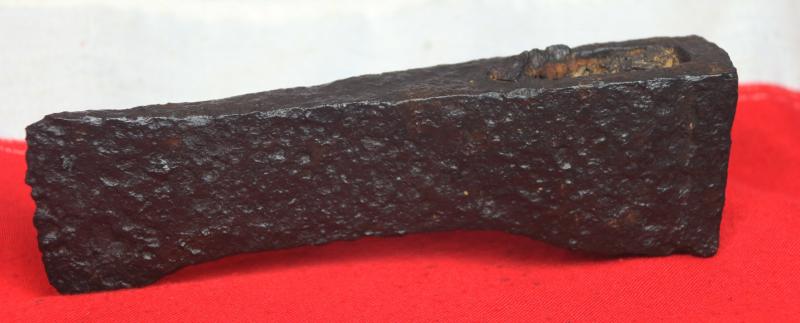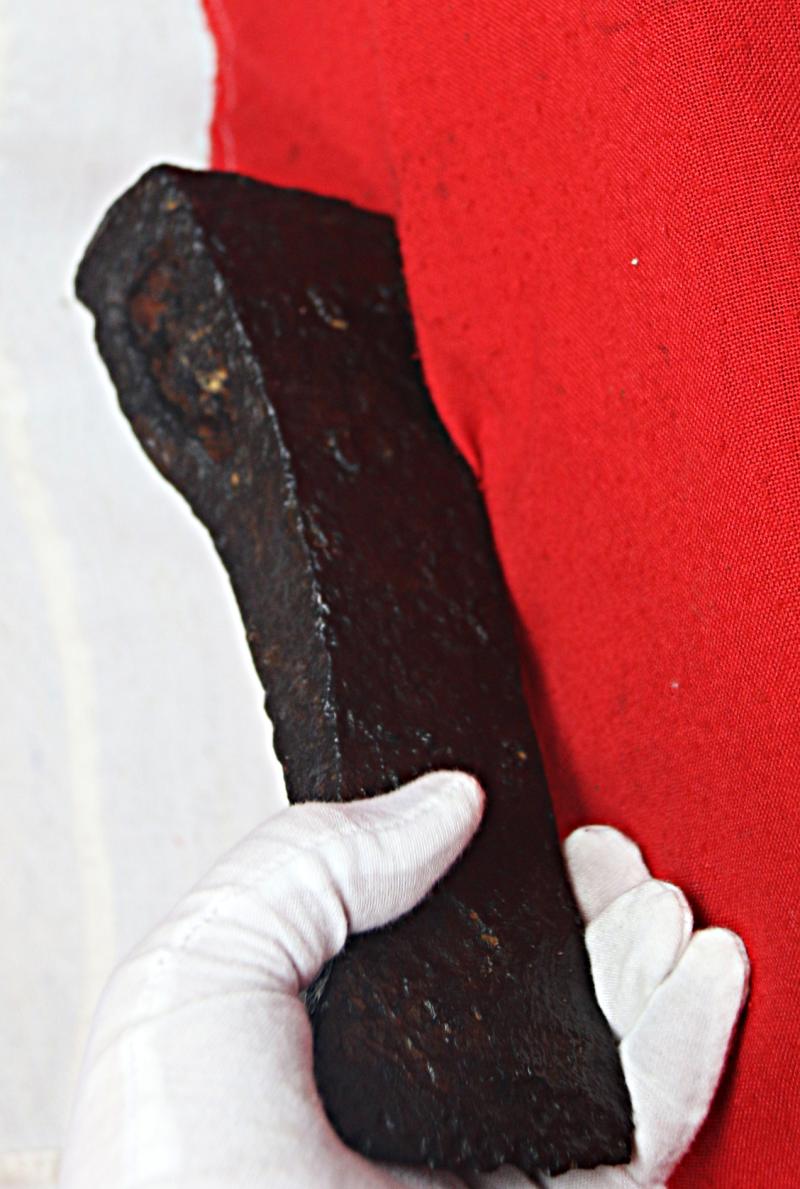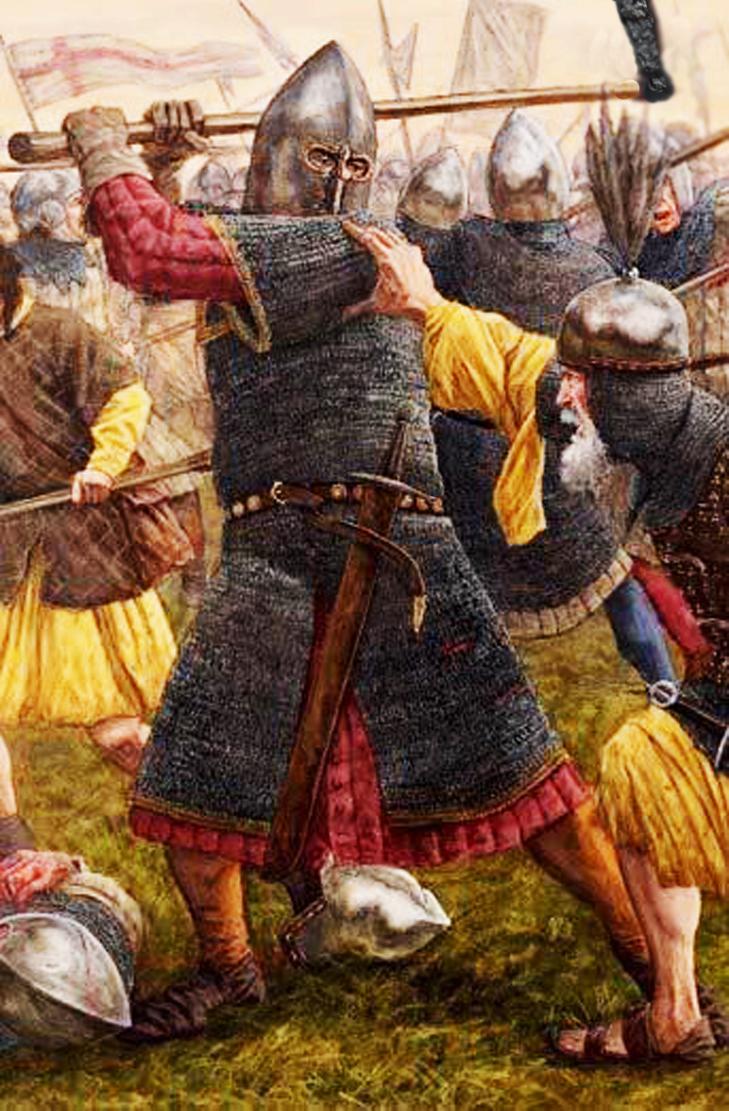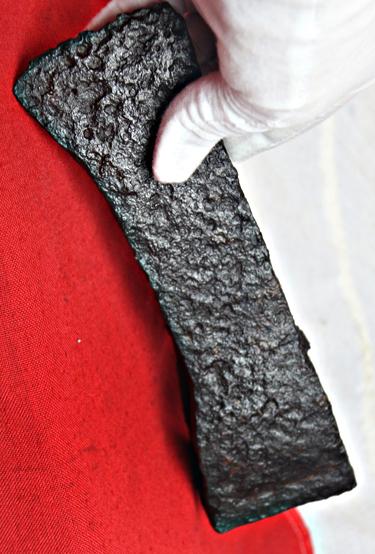A Fantastic and Phenomenally Powerful Two Handed Viking War Hammer Axe. Weighing Just Under Four Pounds. Wheeler {1927} A, Type I Circa 840 AD
This is a monstrously powerful axe of incredible heft. Used with the long haft somewhat akin to the axe of a Huscarl, the Danish Viking mercenaries that were famously the personal guard of King Harold at the battle of Hastings. Incredibly well preserved for its age, and remarkably still bears the remains of the wooden haft in the affixing aperture. Axes like this are categorized by the 1927 Wheeler classification system of Viking armaments, which groups pieces based off their shape, size, and intended use.
Introduced by King Cnute, The Huscarls were the Royal Bodyguard and the elite fighters in the English field armies of the time. Highly trained, highly paid and highly motivated, they were the best and most highly feared troops in Europe, armed with long two handed axes, often in the later Viking age, with a broader cutting edge, but the earlier Viking age they had narrower cutting edges, as has this one, and it is said especially good for smashing helmets and piercing or crushing chain mail armour. In the early Viking Age, the cutting edge of big axes measured 7cms, {as is this one} to 15 centimetres, while later Viking and Danish axes became wider. The later Danish Huscarl axe had a crescent-shaped cutting surface that measured 22 to 45 cms.
Royal huscarls are thought to have numbered three thousand - a great number of men to pay in those days. A special tax of one silver mark per ten hides was levied to pay the huscarls. Further to their pay in coin (deemed to have been monthly) they were housed and fed initially from the king's coffers. Whether the king armed them as well is not known for certain. Gifts of weapons and equipment would have been made periodically to maintain their loyalty, in the manner of Scandinavian kings being 'ring-givers' in the early days of the Vikings. They would have had to have means of their own, as a king might easily dismiss them from his service for 'conduct unbecoming', to pay for their own armament and at least one horse to take him to fight (although in common with most other warriors of the northern world they fought on foot in time-honoured fashion). A huscarl's equipment amounted to mail-shirt (later mail-coat similar to the Normans' hauberk), one or more helmets, shields, spears and 'Dane-axe', the very effective long-shafted, two-handled fighting axe.
Knowledge about the arms and armour of the Viking age is based on archaeological finds, pictorial representation, and to some extent on the accounts in the Norse sagas and Norse laws recorded in the 13th century. According to custom, all free Norse men were required to own weapons and were permitted to carry them all the time. These arms were indicative of a Viking's social status: a wealthy Viking had a complete ensemble of a helmet, shield, mail shirt, and sword. However, swords were rarely used in battle in the same quantity as axes, as few Vikings were of the status to own or carry a sword, A typical bondi (freeman) was more likely to fight with a spear, axe, with shield and most also carried a seax as a utility knife and side-arm. Bows were used in the opening stages of land battles and at sea, but they tended to be considered less "honourable" than a melee weapon.
The warfare and violence of the Vikings were often motivated and fuelled by their beliefs in Norse religion, focusing on Thor and Odin, the gods of war and death. In combat, it is believed that the Vikings sometimes engaged in a disordered style of frenetic, furious fighting known as berserkergang, leading them to be termed berserkers. Such tactics may have been deployed intentionally by shock troops, and the berserk-state may have been induced through ingestion of materials with psychoactive properties, such as the hallucinogenic mushrooms, Amanita muscaria, or large amounts of alcohol. Perhaps the most common hand weapon among Vikings was the axe swords were more expensive to make and only wealthy warriors could afford them. The prevalence of axes in archaeological sites can likely be attributed to its role as not just a weapon, but also a common tool. This is supported by the large number of grave sites of female Scandinavians containing axes. Several types of larger axes specialized for use in battle evolved, with larger heads and longer shafts.
Vikings most commonly carried sturdy axes that could be thrown or swung with head-splitting force. The Mammen Axe is a famous example of such battle-axes, ideally suited for throwing and melee combat.
An axe head was mostly wrought iron, possibly with a steel cutting edge. This made the weapon less expensive than a sword, and was a standard item produced by blacksmiths, historically.
Like most other Scandinavian weaponry, axes were often given names. According to Snorri Sturluson's Prose Edda, axes were often named after she-trolls. A bearded 10th century Viking battle axe that could double as a throwing axe from the time of the last Viking, English King, Eric Bloodaxe, King of Northumbria. Probably the eldest son of King Harald Finehair The first King of all Norway. Eric's name probably derives from the legend that he murdered most of his 20 brothers, excepting Hakon. This was an unfortunate error as, upon Haralds death, Hakon returned to Norway from Britain to claim Harald's throne, and removed Eric from his Kingship. His elder brother Eric then fled Norway to Britain and to King Athelstan, an old friend of his father's, whereupon he took the Kingdom of Northumbria in around 947 a.d. While the sagas call him 'Bloodaxe', one of the Latin texts calls him fratris interfector (brother-killer), but, for whatever reason his name was derived, it was certainly a fine example of the descriptive titles the Viking warriors had, and that we are told of in the Viking sagas.
Weighing just under 4 pounds, 9 inches {23 cms} x 2.5 inches {7cms}
Code: 25471
1595.00 GBP

